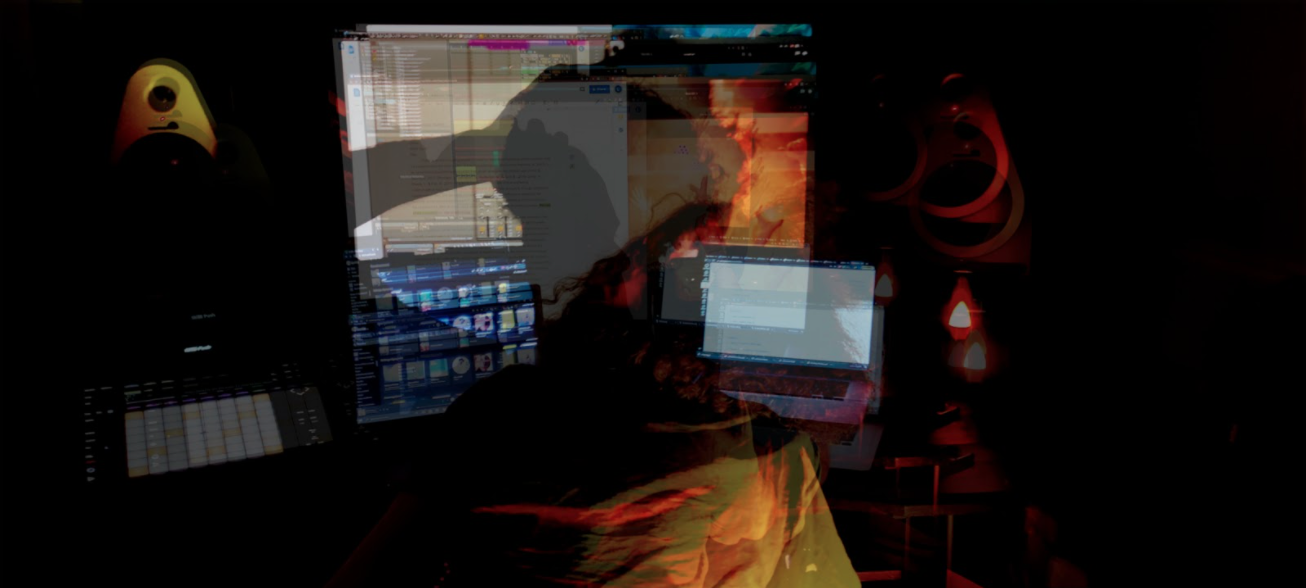A recent Euronews article raised questions about children becoming more prone to cyber addiction, in the context of increased device usage during the pandemic. Motivated by my own extensive digital technology usage in the past year, I decided to talk to university students who are forced to rely on devices for their education. However, instead of addressing the issue of addiction, I decided to focus on students’ personal experiences with online education and find out whether this has impacted their device usage, wellbeing and productivity – or not.
In an article written by Morrison & Gomez, addressed in the course Communication Technologies and their Impacts, the concept of pushback phenomenon is discussed. Pushback happens when due to saturation or overload, technology users attempt to regain control of their device usage by setting boundaries and establishing a better work-life balance. As expected, students’ screen time tends to be higher, but their reactions to this were quite different. Some students I spoke with adapted their behavior in order to manage their technology usage better, while one student did not experience problems with or the need to cut down on his device usage.
The stories
In the beginning of the first lockdown, Agnes, an IBCoM student from China, felt like she was in a continuous war with her devices, trapped by the idea that she has no choice but to use them. It took a few months for Agnes to make peace with the situation that she, like many other students, found herself in. She eventually learned how she can use digital devices as tools for keeping herself organized, instead of feeling like these devices took over her life. Similarly, Shadon, a South African IBCoM student, chooses to see these devices as tools – and nothing more – that he uses for specific purposes. This seems to help both Agnes and Shadon keep a boundary between the online and offline parts of their lives, something that can be considered a manifestation of the pushback phenomenon.
Shadon estimated that he spent 90% of his time on his computer in the busiest week of the term but generally, he tries “to purposely minimize when and where” he uses it. Agnes recognizes that her screen time increased since education moved online: “I spend a crazy amount of time in front of the screen”, but what she found more significant was how she turned to non-digital ways of keeping herself entertained. Feeling saturated and tired due to all the hours she spent doing online course work, Agnes rejects any continuation of her staring at a screen, and she is aware that she is experiencing a form of pushback.
Shadon is using his devices in his free time as well, replacing the outdoor activities he used to do and enjoy, such as going out for drinks. But that doesn’t necessarily mean that he doesn’t feel the need to stay away from his devices; it’s just that as he said, he doesn’t really have any other choice anymore. Even before the pandemic hit, Shadon felt the need to cut down on his device usage. He was sometimes using an old phone to keep himself away from social media. “I try to stay away when I can”. If before, he was usually getting away from his devices naturally, without necessarily having a clear intention in mind, he now tries to cut down on his device usage more purposefully.
David, a Dutch IBCoM student, had a quite different experience. As expected, his screen time is higher now than it used to be – at around 12-13 hours on a weekday. He acknowledges that the boundary between the online and offline was already blurred before the pandemic, but now it is even less defined: “During school, there are more distractions but it is also more accessible during my free time”. However, David found it easy to adapt and he sees the positive sides of online education, even if he misses the social aspect of his life. He now appreciates the outdoors and offline activities a lot more than he used to. Adding to that, “school is one click away”, which made the course work less stressful. For him, what he is going through now is a good preparation for the future, when online work and digitalization will be more and more prevalent.
Clearly, the pushback phenomenon is manifesting itself among the students I have talked to. Acknowledging this is the first step towards an improved day-to-day life that can help students go through the current ever-present digital life. Recognizing the benefits of it and keeping in mind that there will always be downsides related to the situations we find ourselves in, is something worthy of remembering when experiencing online education (and beyond).
Author: Bianca Raicu
Editor: Gwendolyne Cheung
Photographer: Lindsay Bryant
Sources
Morrison, S., & Gomez, R. (2014). Pushback: expressions of resistance to the “evertime”of constant online connectivity. First Monday, 19(8). https://doi.org/10.5210/fm.v19i8
Pinna, M. (2021). Is the pandemic fueling cyber-addiction in young people?. Retrieved 13 February 2021, from https://www.euronews.com/2021/01/29/is-the-pandemic-fuelling-cyber-addiction-in-young-people

